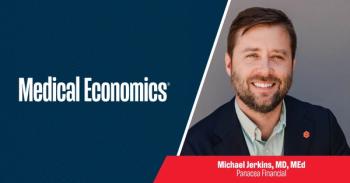
Popular nutrition plans: Building a plan for patients with obesity
The pros and cons of popular diet plans.
When building an obesity treatment plan for a patient, one factor is creating a nutrition plan that is suitable for your patient. While there are many possibilities for the direction you can take when building a nutrition plan, there are a few that are popular among physicians.
Atkins:
The Atkins nutrition plan is a high-protein, high-fat, and low-carbohydrate plan developed in the 1970s. Atkins focuses on the idea that by decreasing carbohydrate intake, the body will switch to burning stored fat for energy instead of carbohydrates, known as ketosis. Allowable foods include meat, fish, eggs, high-fat dairy, nuts, seeds, and certain vegetables.
The Atkins plan typically involves four phases:
- Induction: People consume less than 20 grams of carbohydrates daily for the first two weeks to kickstart ketosis.
- Balancing: In this phase, carbohydrate intake gradually increases to determine the level of carbohydrates that an individual can tolerate while maintaining ketosis.
- Fine-tuning: This phase involves fine-tuning carbohydrate intake to achieve weight loss goals and maintain ketosis.
- Maintenance: Once weight loss goals have been achieved, individuals can gradually increase their carbohydrate intake to a level that allows them to maintain their weight loss.
Benefits of Atkins include weight loss and improved blood sugar control. Risks of Atkins include increased heart disease, nutrient deficiencies, and kidney damage due to the high protein diet. There is also a risk of dehydration during the initial stages, increasing the risk of kidney stones. Eating a high amount of red and processed meats also increases the risk of colon cancer.
Keto:
A ketogenic (keto) nutrition plan is a high-fat, low-carbohydrate plan, that aims to force the body into ketosis, primarily burning fat for energy instead of carbohydrates. Keto involves consuming the bulk of daily calories from fat, 70-80%, a recommendation of 10-20% from protein, and restriction to no more than 10% from carbohydrates. By restricting carbohydrates, the body runs out of its primary energy source (glucose) and produces ketones from stored fat for fuel. Allowable foods include meat, fish, eggs, non-starchy vegetables, nuts, seeds, high-fat dairy products, and berries in small quantities.
The benefits of a Keto nutrition plan include rapid weight loss initially, which is often a confidence booster for patients who have struggled to lose weight. However, the risks are many:
- Nutrient deficiencies: A keto diet is highly restrictive and, therefore, can lead to fiber, vitamin, and mineral deficiencies.
- Keto flu: Some people may experience flu-like symptoms, such as headaches, fatigue, and nausea, during the initial stages of the diet as they adjust to the low carbs.
- Increased cholesterol levels: Consuming high amounts of saturated fats can raise blood cholesterol levels, which may increase the risk of cardiovascular disease.
- Risk of kidney stones: A high protein intake can increase the risk of kidney stones.
- Digestive issues: Poor fiber intake can cause changes in bowel habits, such as constipation or diarrhea.
Mediterranean:
The Mediterranean nutrition plan is based on the traditional eating habits of people in Mediterranean countries such as Greece, Italy, and Spain. Allowable foods include fruits, vegetables, whole grains, legumes, nuts, seeds, and healthy fats such as olive oil, fatty fish, and avocado. The plan also allows for moderate amounts of dairy products, poultry, and eggs and low to moderate amounts of red meat. Foods are to be prepared with herbs and spices, and the use of salt is discouraged.
The Mediterranean plan offers a range of health benefits, including a lower risk of heart disease, stroke, hypertension, and some types of cancer. The plan is also associated with improved cognitive function and lower rates of depression.
Risks of a Mediterranean plan include:
- Overconsumption of certain foods, such as macadamia and Brazil nuts, may raise cholesterol levels. Additionally, the high-fat content of nuts and olive oil may lead to weight gain.
- Heavy reliance on seafood: Certain fish options, such as salmon and mackerel, may also contain contaminants like mercury, which can be harmful in high amounts.
In general, the benefits of having a patient follow a specific plan when treating obesity allow physicians to reduce or eliminate certain foods, such as carbohydrates, that are known to cause weight gain. When combined with regular exercise, focusing on lowering carbohydrates is often the mainstay of lifestyle modification when treating obesity.
The drawbacks are that completely eliminating food groups is very hard to sustain. Patients can often maintain a restrictive meal plan for a time, but we often see patients revert to old eating habits due to boredom, lack of variety, or out of frustration if there is no weight loss. When it comes to treating obesity, the most important advice is to work with patients to create a sustainable lifestyle change. Sometimes that may mean decreasing rather than eliminating. This does not always lead to weight loss as fast, but when combined with appropriate anti-obesity medications and regular exercise, it usually leads to weight loss that is maintained for more extended periods than what is seen with a restrictive diet.
To find more important information for developing a patient nutrition plan, check out OMA’s
Courtney Whittle, MD, MSW, DABOM, aka Dr. Cee Nicole, was born and raised in the Los Angeles area. She attended UC Berkeley where she obtained a BA in Social Welfare. She then obtained a Master’s in Social Work and MD from USC and completed her Pediatric residency at UCLA. Dr. Whittle serves as the first Pediatric Obesity Champion for the Southeast Permanente group. She serves on two American Board of Obesity Committees and is proud to be one of the authors of the 2023 Obesity Medicine Association's Obesity Algorithm. Dr. Whittle is proud to have founded Weight A Minute Clinic, an adult and pediatric obesity telehealth practice, and is currently accepting new patients in Georgia.
Newsletter
Stay informed and empowered with Medical Economics enewsletter, delivering expert insights, financial strategies, practice management tips and technology trends — tailored for today’s physicians.








